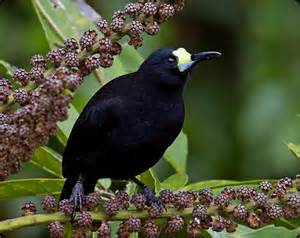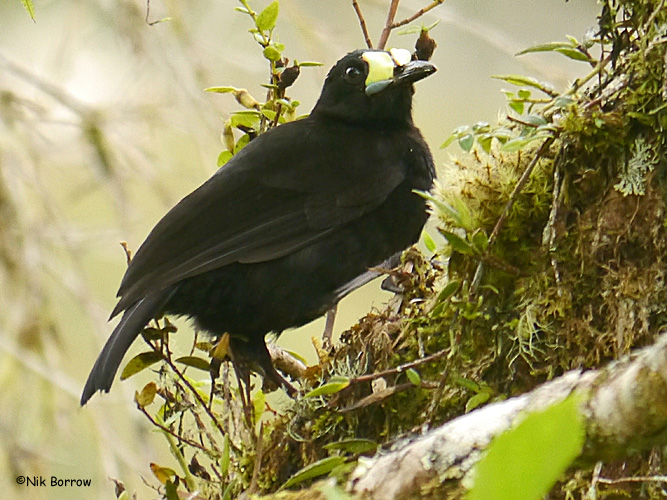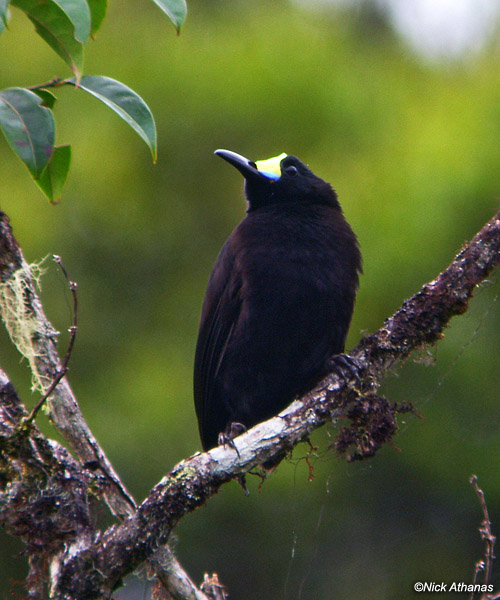
Paradigalla brevicauda
SUBFAMILY
Paradisaeinae
TAXONOMY
Paradigalla brevicauda Rothschild and Hartert, 1911, Mount
Goliath, central Dutch New Guinea.
OTHER COMMON NAMES
English: Short-tailed wattled bird of paradise; French: Paradisier
а queue courte; German: Langschwanz-Paradigalla; Spanish:
Paradigalla de Cola Corta.
PHYSICAL CHARACTERISTICS
9.0 in (23 cm); female 0.4–0.38 (155–170 g), male 0.35–0.41 lb
(160–184 g). Head, upperparts, and underparts a velvety black.
Yellowish green crown to nape and small, light blue wattle at
the mandible base. Conspicuous bright yellow foreface. Blackish
bill and legs.
DISTRIBUTION
Western and central ranges of New Guinea mainland from the
Weyland Mountains eastward to the Bismark Range at altitudes
of 4,590–8,460 ft (1,400–2,580 m). May be on the Kratke
Range, Papua New Guinea, but unrecorded to date.
HABITAT
Midmontane forests, including beech, forest/garden edges,
secondary growth.
BEHAVIOR
Birds give a rising bell-like zheee call at about 490 ft (150 m)
intervals in moss forest, suggestive of dispersed solitary males
advertising from song posts. In flight, wings make an audible
rattling or rustling.
FEEDING ECOLOGY AND DIET
Omnivorous, predominantly frugivorous, but little known.
Birds acrobatically cling to tree boughs and trunks to tear and
probe into epiphytic plant growth for invertebrates and small
vertebrates. Nestlings fed a large proportion (65%) of animals,
including earthworms, insect larvae, crickets, beetles, mantids,
katydids, spiders, frogs, and skinks.
REPRODUCTIVE BIOLOGY
Polygynous, with presumed promiscuous males and exclusively
female nest attendance. Breeding on the Tari Valley slopes
recorded in all months except March and November. Nest is a
substantial, deep, open cup and the clutch is one egg. Incubation
lasts more than 19 days and a known nestling period was 25 days.
CONSERVATION STATUS
Not threatened.
SIGNIFICANCE TO HUMANS
None known.
Other popular Animals
Photo Gallery of - Short-tailed paradigalla




 Animalia Life
Animalia Life